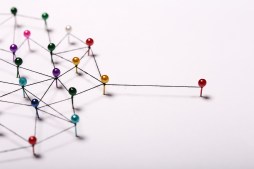How to Identify and Analyze Customer Segments for Effective Product Tailoring
In today’s competitive marketplace, understanding your customers is paramount to achieving success. Tailoring your product to different customer segments can enhance customer satisfaction and drive sales. But how do you effectively identify and analyze these segments? This article will guide you through the essential steps in recognizing customer segments that can benefit from tailored products.
Understanding Customer Segmentation
Customer segmentation is the process of dividing a target market into smaller, more defined groups based on shared characteristics. These characteristics can include demographics, psychographics, behaviors, or needs. By segmenting your audience, you can better understand their unique preferences and design products that cater specifically to each group. The goal of this approach is to create a more personalized experience for customers while maximizing the effectiveness of your marketing strategies.

Gathering Data for Segmentation
The first step in identifying customer segments is gathering relevant data. This data can come from various sources: surveys, purchase histories, website analytics, social media interactions, and more. Use both qualitative and quantitative methods to compile a comprehensive dataset that reflects your customers’ preferences. Once you have the necessary data, analyze it to uncover patterns or trends that may indicate distinct customer groups.
Creating Customer Personas
After analyzing your data, consider creating detailed customer personas for each segment identified. A persona typically includes demographic information (age, gender), psycho-graphic details (interests, values), preferred communication channels (email vs social media), and specific needs or pain points related to your product. By developing these personas, you’ll gain insight into how different types of customers think and behave—essential knowledge for tailoring product offerings effectively.
Tailoring Products Based on Insights
With clear customer segments established through personas, it’s time to tailor your products accordingly. This may involve customizing features based on the specific needs of each segment or developing entirely new product lines aimed at niche markets. For instance, if one segment prioritizes sustainability while another values luxury features—your approach should adjust accordingly by offering eco-friendly options or luxury enhancements as per their preferences.
Testing and Iterating Your Approach
Finally, once you’ve tailored your product offerings based on customer segments, it’s crucial to test their effectiveness in the market. Gather feedback through trials or focus groups within each segment before launching broadly. Monitor sales data and collect continued feedback post-launch so you can iterate on the product based on real-world performance—ensuring ongoing alignment with evolving customer expectations.
Identifying and analyzing customer segments is not just about enhancing sales; it’s about building long-term relationships with diverse audiences by providing them exactly what they need when they need it most. With proper segmentation techniques in place followed by thoughtful analysis as outlined above—your brand will be well-positioned for successful product tailoring.
This text was generated using a large language model, and select text has been reviewed and moderated for purposes such as readability.











